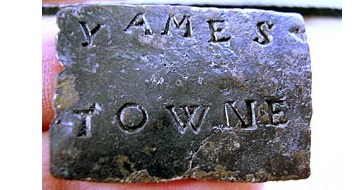
Lead
Lead General
| Name:Lead | Symbol:Pb |
| Type:Metal, Carbon group | Atomic weight:207.2 |
| Density @ 293 K:11.34 g/cm3 | Atomic volume:18.17 cm3/mol |
|
Discovered:
Lead has been known since ancient times. Its chemical symbol, Pb, comes from its Latin name, 'plumbum'. |
|
Lead States
| State (s, l, g):solid | |
| Melting point:600.61 K (327.46 °C) | Boiling point:2023 K (1750 °C) |
Lead Energies
| Specific heat capacity:0.13 J g-1 K-1 | Heat of atomization:196 kJ mol-1 |
| Heat of fusion:4.77 kJ mol-1 | Heat of vaporization :177.9 kJ mol-1 |
| 1st ionization energy:715.6 kJ mol-1 | 2nd ionization energy:1450.5 kJ mol-1 |
| 3rd ionization energy:3081.5 kJ mol-1 | Electron affinity:35.1 kJ mol-1 |
Lead Oxidation & Electrons
| Shells:2,8,18,32,18,4 | Electron configuration:[Xe] 4f14 5d10 6s2 6p2 |
| Minimum oxidation number:-4 | Maximum oxidation number:4 |
| Min. common oxidation no.:0 | Max. common oxidation no.:4 |
| Electronegativity (Pauling Scale):2.33 | Polarizability volume:6.8 Å3 |
Lead Appearance & Characteristics
| Structure: fcc: face-centered cubic | Color:bluish gray |
| Hardness:1.5 mohs | |
|
Harmful effects:
Lead and its compounds are poisonous. |
|
|
Characteristics:
Lead is a bluish-gray, soft, dense metal that has a bright luster when freshly cut. It tarnishes slowly in moist air to form a dull gray coating. The metal is highly ductile and malleable. Lead is extremely resistant to corrosion and is a poor conductor of electricity. Uses: Large quantities of lead, both as the metal and as the dioxide, are used in storage batteries. Lead is also used in cable covering, as ammunition, as electrodes, in solder and as roofing material. The metal is used as shielding from radiation, e.g. in x-ray rooms.and nuclear reactors. Lead oxide is also used in the manufacture of fine crystal glass. Historically, lead was used in plumbing. Tetraethyl lead was used as an anti-knock agent in petrol, and as an additive in paints. These uses have been reduced recently because of environmental concerns about cumulative lead poisoning. |
|
Lead Reactions
| Reaction with air:mild, w/ht ⇒ PbO | Reaction with 6 M HCl:none |
| Reaction with 15 M HNO3:mild, ⇒ NOx, Pb(NO3)2 | Reaction with 6 M NaOH: |
Lead Compounds
| Oxide(s):PbO (litharge), PbO2, Pb2O3, Pb3O4 | Chloride(s):PbCl2 & PbCl4 |
| Hydride(s):PbH4 |
Lead Radius
| Atomic radius:180 pm | Ionic radius (1+ ion):pm |
| Ionic radius (2+ ion):133 pm | Ionic radius (3+ ion):pm |
| Ionic radius (2- ion):pm | Ionic radius (1- ion):pm |
Lead Conductivity
| Thermal conductivity:35.3 W m-1 K-1 | Electrical conductivity: 4.8 x 106 S m-1 |
Lead Abundance & Isotopes
| Abundance earth's crust:14 parts per million by weight, 1 part per million by moles | |
| Abundance solar system:10 parts per billion by weight, 70 parts per trillion by moles | |
| Cost, pure:$2.45 per 100g | |
| Cost, bulk: $0.02 per 100g | |
|
Source:
Lead rarely occurs naturally in nature and is can be found in ores, mainly with copper, zinc and silver. The principal lead mineral is lead sulfide (galena, PbS). Other common minerals are cerussite (lead carbonate, PbCO3) and anglesite (lead sulfate, PbSO4). Lead is refined from galena (PbS) by heating. A large amount of lead is also recovered from recycling. | |
|
Isotopes:
35 whose half-lives are known, mass numbers 181 to 215. Of these, only three are stable: 206Pb, 207Pb and 208Pb |
|
Lead Other
|
Other:
|
|
Prev: Thallium Next: Bismuth |